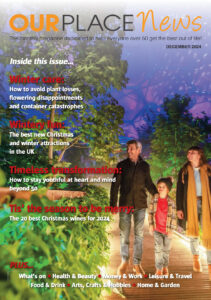Self Help
In addition to our Stroke Self-help list, The Mayo Clinic website is very good on this subject.
Medline Plus says that says high blood pressure is perhaps the biggest risk factor for stroke. High blood pressure can be prevented and treated with behaviour changes and your doctor’s help. If you have had a stroke, your doctor and medical team will help you control the risk factors which can lead to further crises. If you haven’t had a stroke, controlling the risk factors can prevent you from having one.
Stroke can run in families. Genes play a role in stroke risk factors such as high blood pressure, heart disease, diabetes, and vascular conditions. With or without a family history of strokes, however, these risk factors increase your vulnerability.
Stroke Prevention
Everyone can and should take steps to lower their risk for stroke, whether they have had a stroke or not. Get your doctor’s help with these as required, and see our Health Information we Trust list. Don’t play Russian Roulette with stroke. Lower your risk. Important things you can do include:
Prevent and control high blood pressure: Blood pressure is easily checked and monitored. It can be controlled with lifestyle changes and with medicines when needed. You can work with your doctor to treat high blood pressure and bring it down. Lifestyle actions such as healthy diet, regular physical activity, stopping smoking, and maintaining a healthy weight will also help you to keep normal blood pressure levels. All adults should have their blood pressure checked on a regular basis.
Prevent and control diabetes: People with diabetes have a higher risk of stroke, but they can also work to reduce their risk. Further, recent studies suggest that all people can take steps to reduce their risk of diabetes. These include weight loss and regular physical activity.
Stop smoking: Yes, we’ve said this before, but it’s worth saying again. Stopping smoking is one of the best things a person can do to lower their risk of stroke.
Treat Atrial Fibrillation: Atrial fibrillation is an irregular beating of the heart. It can cause clots that can lead to stroke. Your doctor can prescribe medicines to help reduce the chance of clots.
Prevent and control high blood cholesterol: High blood cholesterol is a major risk factor for heart disease, which can increase the risk for stroke. Preventing and treating high blood cholesterol includes eating a diet low in saturated fat and cholesterol and higher in fibre, maintaining a healthy weight, and getting regular exercise. A lipoprotein profile can be done to measure several kinds of cholesterol as well as triglycerides (another kind of fat found in the blood). All adults should have their cholesterol levels checked once every five years, and more often if it is found to be high. If it is high, your doctor may prescribe medicines to help lower it.
Moderate alcohol use: Excessive alcohol use can increase the risk of high blood pressure.
Regular Physical Activity: We keep coming back to exercise, don’t we? Walking, Yoga, Pilates, swimming, Tai Chi, gardening… calm, regular physical activity may not be the Fountain of Youth but it’s a big step in the right direction. If you haven’t found a satisfying and enjoyable way to get the exercise you need, look at our HIT list and our Complementary Techniques and Therapies Guide.
“Hairdresser Stroke”: This is a strange one, but we thought we’d better mention it. BBC Healthreports stroke apparently caused by laying the head back in an extreme position for hair washing at a beauty parlour. They refer to a 1997 report published in The Lancet by two British doctors about a woman who suffered a stroke after having her hair washed. The doctors recommended that hairdressers use a cushion and that the neck is not overextended. We think the point to take from this is that having the head thrown back at an extreme angle for any length of time, for any purpose, should be avoided.
Supplements, Snake-oils and Diets
Ginkgo Biloba: , The Cochrane Reviews tell us Ginko Biloba is widely used in the treatment of acute ischaemic stroke in China and is also used occasionally in Europe, but its efficacy is uncertain. There is limited experimental support for the use of Ginkgo Biloba extract in ischaemic stroke. …it has been shown that Ginkgo Biloba extract leads to a significant increase in cerebral blood flow and glucose uptake into brain tissue. The Cochrane Reviews advise that high-quality and large-scale randomised controlled trials are needed to test its efficacy in promoting recovery after an ischaemic stroke.
Dan Shen, a herbal medicine, is widely used in the treatment of acute ischaemic stroke in China. Having studied a number of trials, Cochrane advises that reliable conclusions could not be drawn from the present data.
Vinpocetine (reference The Mayo Clinic) is a synthetic derivative of a compound found in the periwinkle plant (Vinca minor). Vinpocetine is available as a prescription drug in Europe and Japan, and sometimes as a dietary supplement. Some preliminary research suggests that vinpocetine may reduce some of the long-term cognitive impairment after an acute ischemic stroke — supposedly by improving blood flow to the brain. However, there have been few clinical studies that have examined the use of vinpocetine for stroke. More research is needed to determine what, if any, role vinpocetine may play in the prevention and treatment of stroke. Side effects of vinpocetine may include upset stomach, vertigo, anxiety, nausea, facial flushing, sleep problems and headache.

